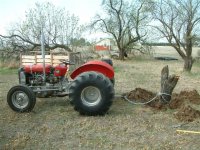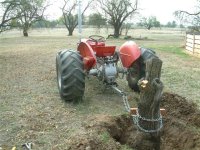Evets Tsorf
Bronze Member
There was a thread started a couple weeks ago posing the question,what is safe, anyone roll over? This thread went off the rails for sixteen pages, discussing the type of vegetation we mow and why, discussions of the meaning geometric equations and some reference to the Road Runner and Coyote.
In this thread I posed a question that I am still looking for an answer for.
I purchased an older John Deere 750 for a piece of property I purchased last year. It has some slopes that I would not use this tractor on. Some I do with a tight sphincter. I have a five foot brush hog that is big for this tractor, I made an assumption that as this implement being quite heavy and very low to the ground should increase the stability of the tractor. There are many stories about people rolling their tractor brush hogging, rolling tractor and wirling blades likely to tighten my life insurance underwriters sphincters too.
What am I missing on the CG of the tractor, the brush hog is lower and heavier than many ballast boxes we put on our tractors for stability.
In this thread I posed a question that I am still looking for an answer for.
I purchased an older John Deere 750 for a piece of property I purchased last year. It has some slopes that I would not use this tractor on. Some I do with a tight sphincter. I have a five foot brush hog that is big for this tractor, I made an assumption that as this implement being quite heavy and very low to the ground should increase the stability of the tractor. There are many stories about people rolling their tractor brush hogging, rolling tractor and wirling blades likely to tighten my life insurance underwriters sphincters too.
What am I missing on the CG of the tractor, the brush hog is lower and heavier than many ballast boxes we put on our tractors for stability.


